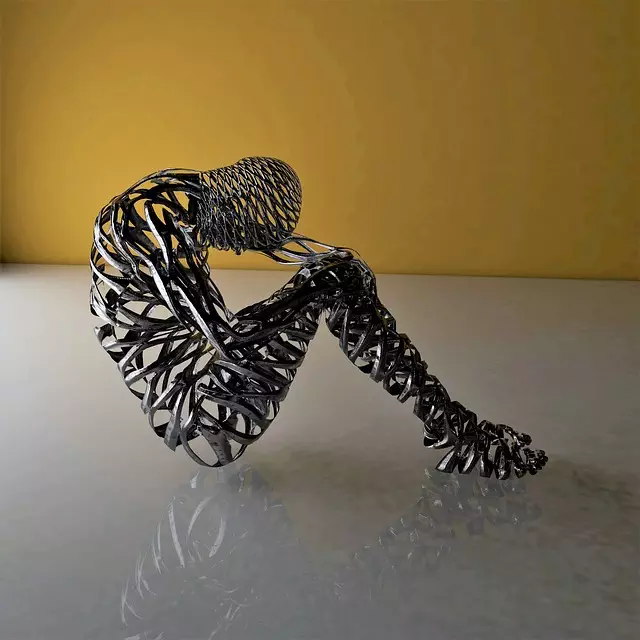Kratom, a natural herb from Southeast Asia, offers muscle soreness relief through its unique chemical composition, including alkaloids like mitragynine and 7-hydroxymitragynine that interact with opioid receptors. This traditional medicine provides pain relief and anti-inflammatory effects without the side effects of prescription medications. Fitness enthusiasts and athletes use kratom in various forms like powder and capsules for chronic muscle pain management, leveraging its non-addictive properties discovered through centuries of traditional use.
Muscle soreness after intense workouts is a common challenge for athletes and fitness enthusiasts. The herb kratom has gained popularity as a natural pain reliever, offering relief from delayed onset muscle soreness (DOMS). This article explores how kratom interacts with the body’s opioid receptors to reduce pain, making it a potential game-changer in post-workout recovery. We’ll delve into the science behind DOMS, various kratom strains, and their effectiveness for muscle soreness relief, along with essential safety precautions.
- The Herb Kratom: A Natural Pain Reliever
- – Introduction to kratom and its historical use in muscle soreness relief.
- – Explanation of how kratom interacts with the body's opioid receptors to reduce pain.
The Herb Kratom: A Natural Pain Reliever
The herb kratom has long been recognized for its natural pain-relieving properties. Derived from the leaves of the Mitragyna speciosa plant, which thrives in tropical regions like Southeast Asia, this powerful natural remedy has gained popularity as an alternative treatment for muscle soreness and other forms of chronic pain.
Kratom’s ability to alleviate discomfort stems from its unique chemical composition, including alkaloids like mitragynine and 7-hydroxymitragynine. These compounds interact with the body’s opioid receptors, triggering a sensation of relaxation and reducing inflammation. Whether used in capsule form, brewed as a tea, or extracted into powder, kratom offers a potential herb stomp solution for those seeking natural relief from muscle soreness without the side effects often associated with prescription medications.
– Introduction to kratom and its historical use in muscle soreness relief.
Kratom, scientifically known as Mitragyna speciosa, is a herb stomp native to Southeast Asia that has been used for centuries in traditional medicine. Its leaves contain alkaloids that interact with opioid receptors in the body, providing pain-relieving and anti-inflammatory effects. This natural source of analgesia has gained popularity among those seeking muscle soreness relief without relying on pharmaceutical options.
Historically, kratom has been chewed fresh or prepared as a tea to alleviate various forms of pain, including muscular discomfort. Today, it is available in different forms such as powder, capsules, and extractions, making it easily accessible for those looking for alternative remedies. The herb’s ability to mitigate muscle soreness without the side effects often associated with non-steroidal anti-inflammatory drugs (NSAIDs) has sparked interest among fitness enthusiasts, athletes, and individuals dealing with chronic pain conditions.
– Explanation of how kratom interacts with the body's opioid receptors to reduce pain.
Kratom’s ability to provide muscle soreness relief is attributed to its interaction with the body’s opioid receptors. This herb contains compounds known as alkaloids, including mitragynine and 7-hydroxymitragynine, which mimic the effects of endogenous opioids. When these alkaloids bind to opioid receptors in the brain and nervous system, they block pain signals from reaching other parts of the body, effectively reducing discomfort associated with muscle soreness. This process is similar to how prescription opioids work but with potentially fewer side effects, making kratom a natural alternative for some individuals seeking relief.
Unlike synthetic opioids, which can have addictive properties, kratom is considered a safer option due to its unique chemical composition and mode of action. The herb has been used traditionally in Southeast Asia for centuries as a pain reliever and stimulant, stomp ing deep roots into various cultures. Its non-addictive nature and broad range of therapeutic potential make it an intriguing herb for those looking to manage chronic muscle pain without relying on pharmaceutical interventions.
Kratom, a powerful herb with a rich history in muscle soreness relief, offers a natural alternative to conventional pain management. Its unique interaction with opioid receptors makes it an effective and safe option for many. Remember that, while kratom can provide significant relief, individual results may vary. Take a dive into the world of this herb stomp to discover its potential benefits for your own well-being.






